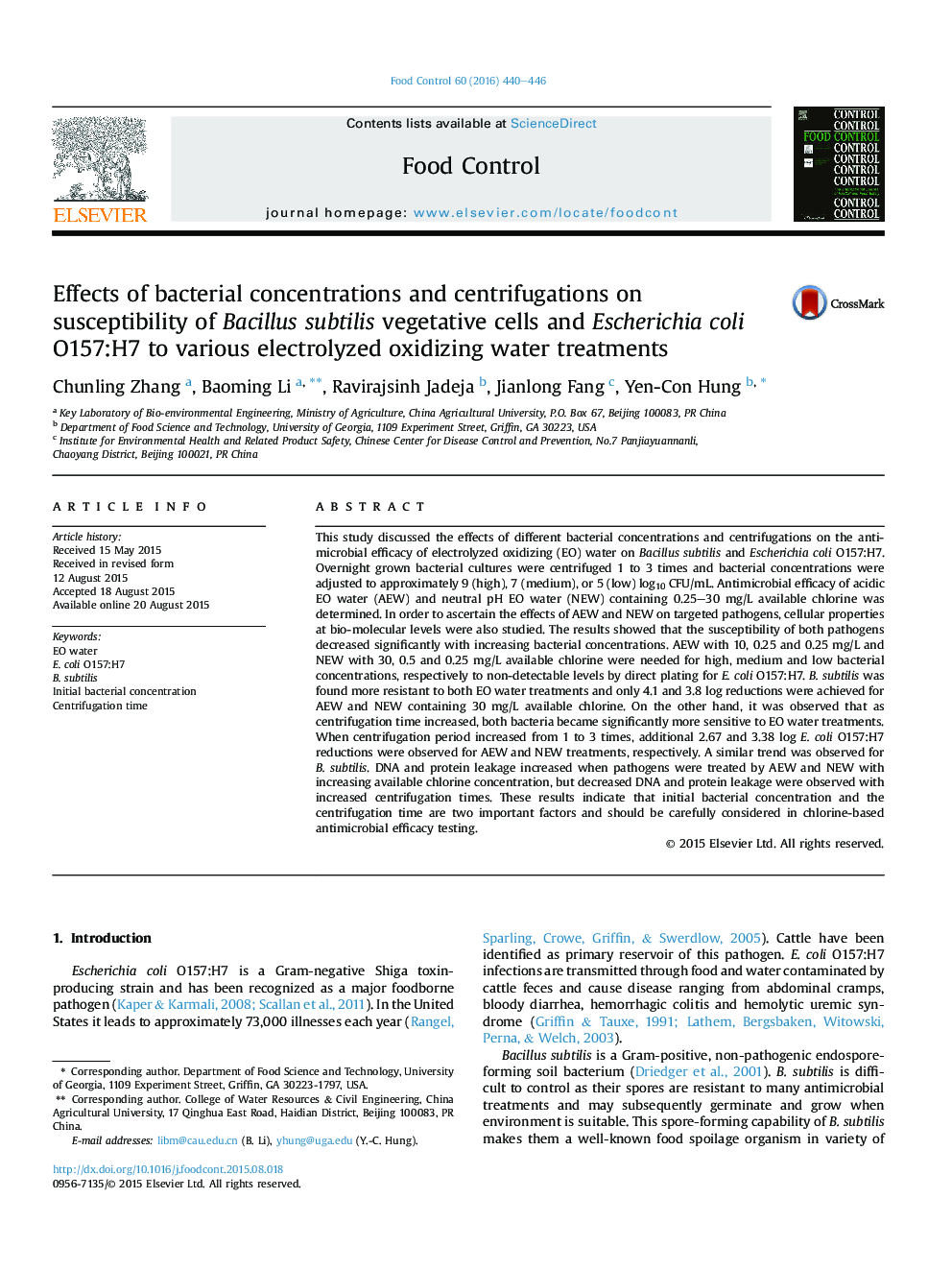| کد مقاله | کد نشریه | سال انتشار | مقاله انگلیسی | نسخه تمام متن |
|---|---|---|---|---|
| 6390313 | 1628402 | 2016 | 7 صفحه PDF | دانلود رایگان |

- We evaluate effect of bacterial concentration on bacterial inactivation by EO water.
- We determine effect of centrifugation time on bacterial inactivation by EO water.
- Bacterial concentration plays a major role in bactericidal activity of EO water.
- Bacteria become more sensitive to EO water treatment after centrifugations.
- EO water treatment renders cells injured and inclusions released.
This study discussed the effects of different bacterial concentrations and centrifugations on the antimicrobial efficacy of electrolyzed oxidizing (EO) water on Bacillus subtilis and Escherichia coli O157:H7. Overnight grown bacterial cultures were centrifuged 1 to 3 times and bacterial concentrations were adjusted to approximately 9 (high), 7 (medium), or 5 (low) log10 CFU/mL. Antimicrobial efficacy of acidic EO water (AEW) and neutral pH EO water (NEW) containing 0.25-30 mg/L available chlorine was determined. In order to ascertain the effects of AEW and NEW on targeted pathogens, cellular properties at bio-molecular levels were also studied. The results showed that the susceptibility of both pathogens decreased significantly with increasing bacterial concentrations. AEW with 10, 0.25 and 0.25 mg/L and NEW with 30, 0.5 and 0.25 mg/L available chlorine were needed for high, medium and low bacterial concentrations, respectively to non-detectable levels by direct plating for E. coli O157:H7. B. subtilis was found more resistant to both EO water treatments and only 4.1 and 3.8 log reductions were achieved for AEW and NEW containing 30 mg/L available chlorine. On the other hand, it was observed that as centrifugation time increased, both bacteria became significantly more sensitive to EO water treatments. When centrifugation period increased from 1 to 3 times, additional 2.67 and 3.38 log E. coli O157:H7 reductions were observed for AEW and NEW treatments, respectively. A similar trend was observed for B. subtilis. DNA and protein leakage increased when pathogens were treated by AEW and NEW with increasing available chlorine concentration, but decreased DNA and protein leakage were observed with increased centrifugation times. These results indicate that initial bacterial concentration and the centrifugation time are two important factors and should be carefully considered in chlorine-based antimicrobial efficacy testing.
Journal: Food Control - Volume 60, February 2016, Pages 440-446